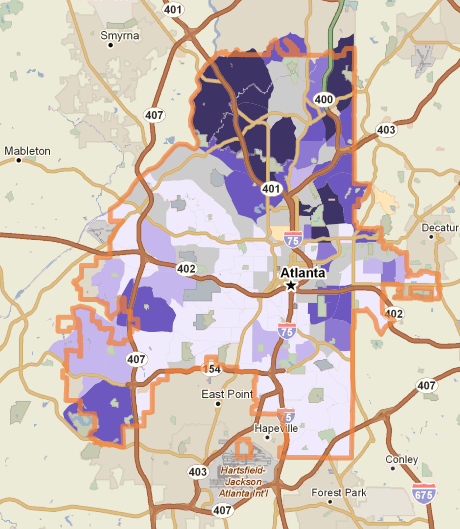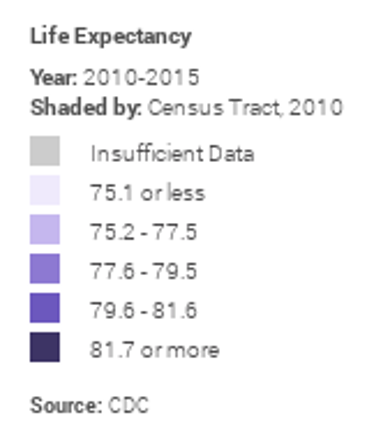Improving Health
LISC ATL understands there is a clear link between wealth and health. Evidence shows that people with greater wealth generally have better health outcomes.
The social determinants of health - the physical, social, and economic conditions in a person’s community and everyday life - constitute 80 to 90 percent of factors affecting health outcomes for a population, with medical care contributing just 10 to 20 percent.[12]
Examples of social determinants of health include:
- Safe housing, transportation, and neighborhoods
- Racism, discrimination, and violence
- Education, job opportunities, and income
- Access to nutritious foods and physical activity opportunities


Racial health disparities caused by inequity are ubiquitous. BIPOC (Black, indigenous, and people of color) face higher rates of chronic disease and premature death compared to the rates among whites. Nationally, life expectancy at birth for Black people is 3.4 years shorter than that of white people.[13]
LISC ATL understands that where one lives is inextricably linked with health outcomes and that just promoting healthy choices is not enough. “Upstream” factors—where a person has the ability to live, how much they must work to afford their housing, how far they must travel to get to their job or a grocery store, and how much free time they have—all play a part in allowing people to make healthier choices. In the case of Black and Brown people, frequently these factors make healthy choices much more difficult.

Consider:
- 48% of metro Atlanta residents are cost burdened when it comes to rent. Over 70% of metro Atlanta renters making less than $50,000 per year are cost burdened. A “cost burdened” household spends over 30% of its income each month on rent.[14]
- The life expectancy for someone living in Atlanta’s Buckhead neighborhood is 17 years longer than it is for someone living in Bankhead, just six miles away.[15]
- Over 500,000 residents in metro Atlanta live in food deserts—low-income communities located more than one mile from a reliable source of fresh produce and other healthy whole foods.[16]
LISC ATL takes a holistic approach to improve health in underinvested places by investing in fundamental resources to keep residents well, including: stable affordable housing, safe places to exercise, access to healthcare, and access to healthy food.
How we do it
- Provide loans to increase the supply of stable, affordable rental housing in mixed-income neighborhoods and preserve affordable housing in gentrifying neighborhoods. See more.
- Provide grants to build or renovate safe, outdoor spaces for community building. See more.
- Provide grants and loans to develop grocery stores, mental health clinics, community health centers, day cares, community gardens, urban farms, and other enterprises that support community health. See more.
[12] https://ssir.org/articles/entry/the_community_cure_for_health_care#
[13] www.cdc.gov/mmwr/volumes/66/wr/mm6617e1.htm
[14] Neighborhood Nexus Analysis for LISC
[15] Neighborhood Nexus Analysis for LISC
[16] www.atlantamagazine.com/great-reads/stranded-in-atlantas-food-deserts/